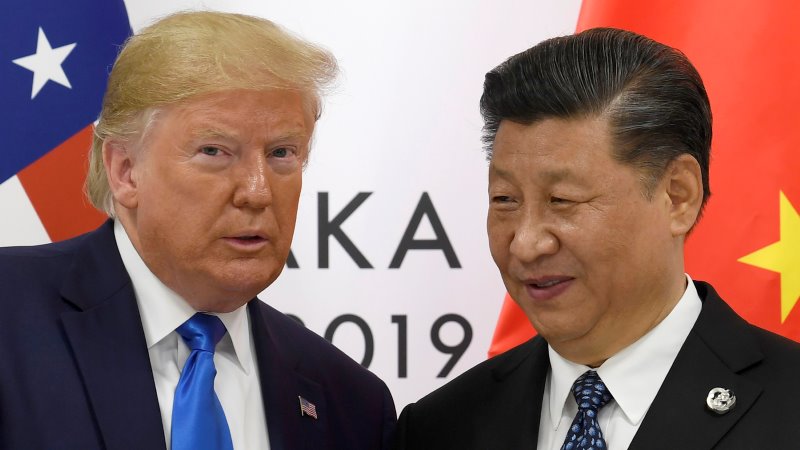Economy
Trump Prepares to Implement 84% Tariff on Chinese Imports Marking a 104% Total Hike
President Trump is preparing to impose an additional 84% tariff on Chinese imports, effective at midnight. This new hike will push the cumulative tariffs during his second term to a striking 104%. This development signals a sharp intensification in U.S.-China trade relations, with Trump’s second term set to reshape the economic landscape.
Initial Tariffs Imposed for Fentanyl Concerns
The tariff escalation began earlier this year with a 20% increase on Chinese goods, a response to China’s alleged role in the global fentanyl trade. Trump initially levied a 10% tariff in February, followed by an additional 10% in March, raising the total to 20%. This action marked the beginning of a broader strategy aimed at curbing Chinese influence on global narcotics trafficking.
Trump’s Retaliation to Chinese Trade Practices
Last week, Trump further escalated his trade war with China by announcing an extra 34% tariff in response to what he deemed unfair Chinese trade practices. This move pushed the total tariff on Chinese imports to 54%. The imposition of these tariffs was seen as a punitive measure against China’s aggressive economic policies, including intellectual property theft and unfair market access.
China’s Response Fuels the Tariff Spiral
As China signaled its intention to retaliate with countermeasures, Trump swiftly responded, raising the stakes even further. He declared that a 50% tariff would be added to all Chinese imports under a new reciprocal tariff framework, set to go into effect early Wednesday morning. This decision brings the cumulative tariff total on Chinese imports to a historic 104%.
Impact of Previous Tariffs on Chinese Imports
The total tariff rate is even higher when factoring in the tariffs from Trump’s first term. During his first presidency, Trump implemented broad tariffs on Chinese products, with many of these tariffs carried over into his second term. These measures, combined with the new hikes, result in a highly complex tariff structure. As a result, the effective tariff rate on Chinese goods is considerably higher than the nominal 104%.

U.S. to Raise Duties on Canadian Softwood Lumber
The United States is set to more than double its duties on Canadian softwood lumber, bringing the new rate to 34.45%…
Effective Tariff Rate Surpasses 100%
Trump’s first-term tariffs averaged 20.8%, according to the Peterson Institute. Adding this, total tariffs could hit 125%. This increase will significantly impact consumer goods, electronics, and machinery. Businesses and consumers will face rising costs.
Tariff Burden: A Strain on U.S. Consumers
The imposition of these tariffs will undoubtedly lead to higher prices for a wide range of products. Goods like electronics, clothing, and appliances could see price increases as companies pass along the costs of tariffs to consumers. This growing tariff burden is likely to exacerbate inflationary pressures, putting a strain on the U.S. economy.
Political and Economic Fallout
Trump’s aggressive tariff policies are already sparking debate about their long-term economic impact. While the tariffs are designed to pressure China into compliance with U.S. trade demands, there are concerns about the broader consequences for global trade. U.S. businesses, particularly those relying on Chinese imports, may face significant disruptions, and consumers could see reduced purchasing power as prices rise.
A Global Trade War: The U.S. vs. China
The escalating U.S.-China trade war extends beyond tariffs. Companies may shift production away from China to diversify. Other nations could join the dispute. Both the U.S. and China aim for economic dominance through trade policy.
What’s Next? The Future of U.S.-China Relations
The dramatic tariff increase leaves U.S.-China trade relations uncertain. Both sides dig in, heightening global economic volatility. China’s response to the 104% tariff remains unclear. Negotiations to de-escalate the situation are yet to occur.


